Ayubowan – “May you live long”!
Sri Lanka, a small pearl-shaped island country in South Asia, is located right under India. It is separated from the Indian subcontinent by the narrow Palk Strait and the Gulf of Mannar: contrary to the popular belief, Sri Lanka was never a part of India.
As Sri Lanka is a tropical island situated near the Equator, you can enjoy a year full of sunshine in this country. There are endless golden beaches, clean waves to surf year around and ancient ruins that speak of a history of over 3000 years. Large tropical rainforests, frolicking Elephants in the land and Blue Whales not too far from the shore, and most of all, extremely hospitable and warm-hearted people who will always great you with a smile and an “Ayubowan” – a traditional greeting which means “May you live long!”.
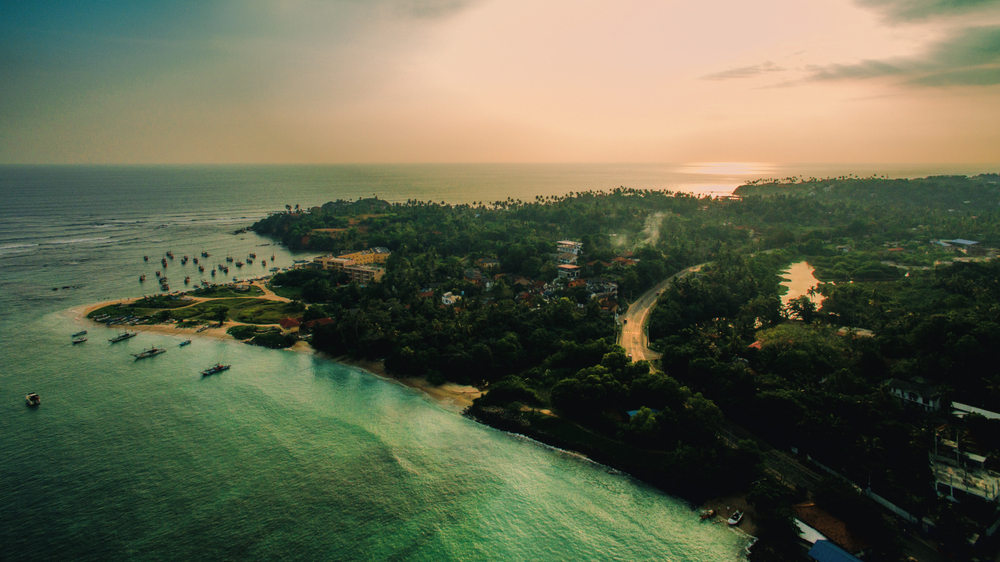
Sri Lanka has a rich culture and heritage infused with Buddhism that spans over 3000 years. Along with the first known Buddhist writings which date back to 29 BC, the country has a well-documented history.
The geographical location of Sri Lanka in the middle of the Indian Ocean was very beneficial for the country. The natural deep harbours, therefore, made it one of the most important destinations on the ancient Silk Road. This quaint little island with smiling people attracted many world travellers since the ancient times – Greeks, Romans, Chinese, Persian, mostly the medieval voyagers from Italy, France and Germany, who “discovered” Sri Lanka for the rest of the world.
Sri Lanka was chronicled under many different names including Taprobane, Taprobana, Zeilan, Serendib, Sillan, Ceylon. You can see the island in a prominent position under India, named Taprobana in “The Ptolemy World Map”, therefore holding significant importance in the world known to Hellenistic society in the 2nd century.
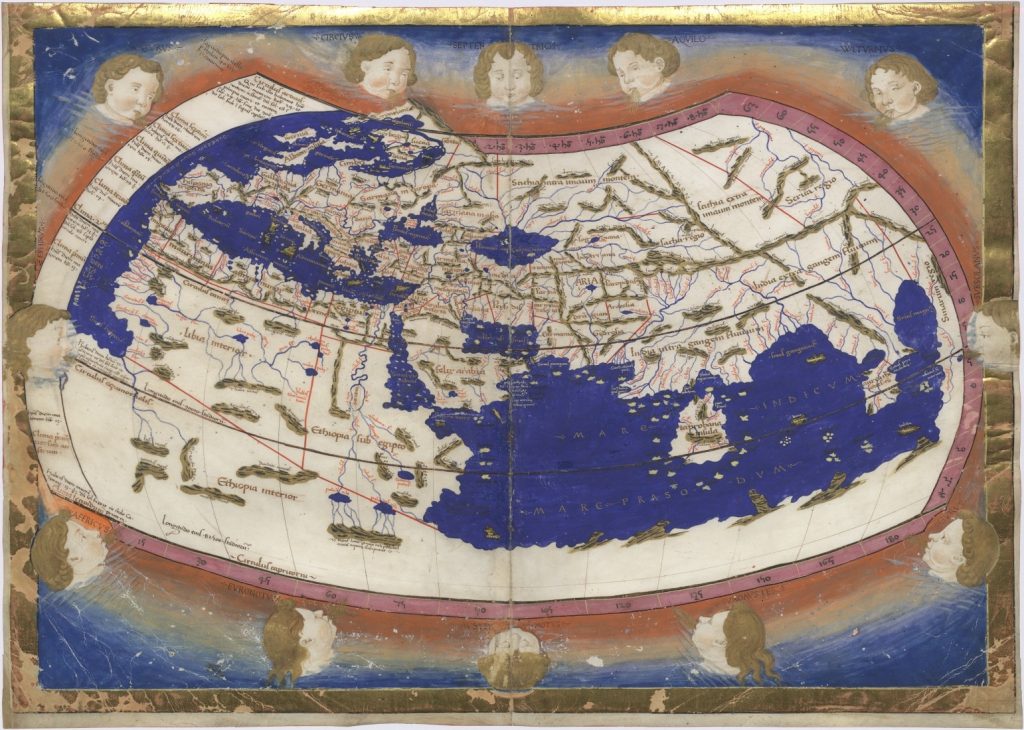
The majority (about 75%) of the Sri Lankan population is Sinhalese, an Indo-Aryan ethnic group native to the country. Other ethnicities include Tamils, Muslims, and Burghers. There is also a minority indigenous group of people – Veddas – living in the South East part of the country.
Sinhalese and Tamil are the official languages of Sri Lanka. A significant amount of Sri Lankans speaks English as a second language, especially in the cities, suburbs, and the coastal area.
How did Sinhalese people come to Sri Lanka?
The legend of the Sinhalese people arriving in Sri Lanka is quite interesting!
The original inhabitants of Sri Lanka were two indigenous tribes called Yakshas and Nagas. You can still see the ruins and the traces of these advanced civilizations which go back to 600BC. According to “The Mahawamsa”, an epic poem written in the Pali language about the history of Sri Lanka, the origin of the Sinhalese people trace back to Prince Vijaya, who became the first king in the country (543 BC).
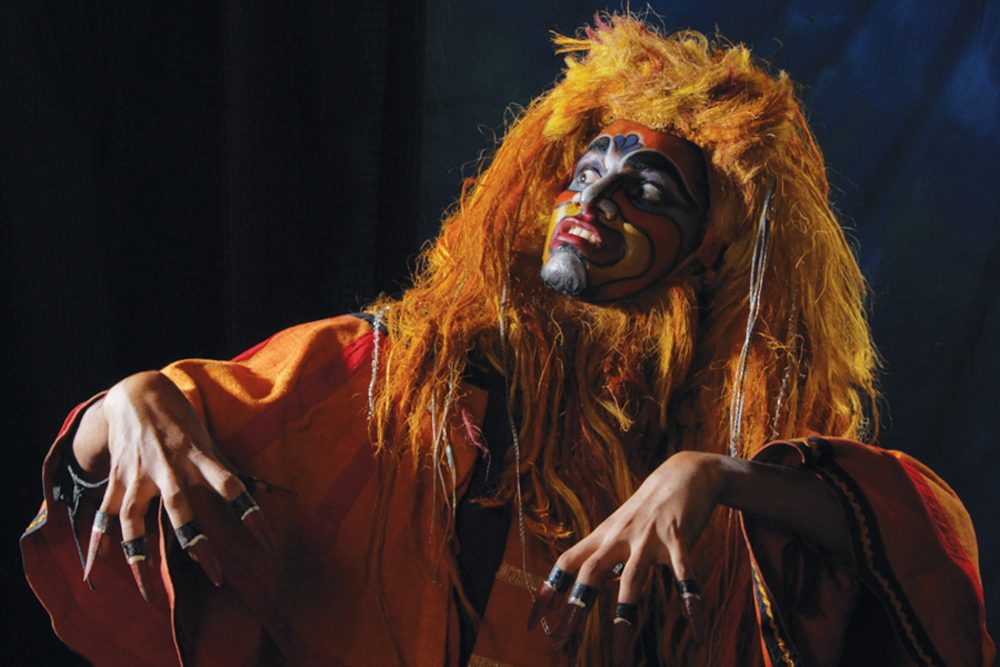
King Vijaya was the son of Sinhabahu, a legendary king of ancient India. The folklore indicates that Sinhabahu’s father was a lion. Vijaya came to the northwest shores of Sri Lanka with 700 of his followers and established the Kingdom of Thambapanni (Golden sands) in Sri Lanka. The term “Sinhalese” translates to “of a lion” or the “Lion People”.
Who colonized Sri Lanka?
Sri Lanka went through a long and strenuous colonization period under 3 European nations; Portuguese, Dutch and British – which lasted for over 400 years.
In 1505 a Portuguese explorer and military commander arrived in the shores of Sri Lanka and discovered that the country was unable to fend off intruders due to wars happening in between the divided kingdoms within the country. Taking advantage of the disarray of internal politics, Portuguese set up a fort in Colombo and gradually extended their control over the coastal areas of the country. They conducted many missionary campaigns in the lowland, converted the locals into Christianity, and religiously persecuted minorities.
Joris van Spilbergen, a Dutch naval officer landed in Sri Lanka in 1602. The King of Kandy at the time made a treaty with the Dutch to get rid of Portuguese, in return for a trade monopoly in the island. Dutch eventually captured all the Portuguese forts and breached the agreement by controlling the whole island, leveeing far heavier taxes on the locals than the Portuguese. There’s a very popular saying among the locals referring to this incident, which translates to “Trading ginger for chilies”, giving the meaning that what they received was worse than what they gave up!
The British arrive!
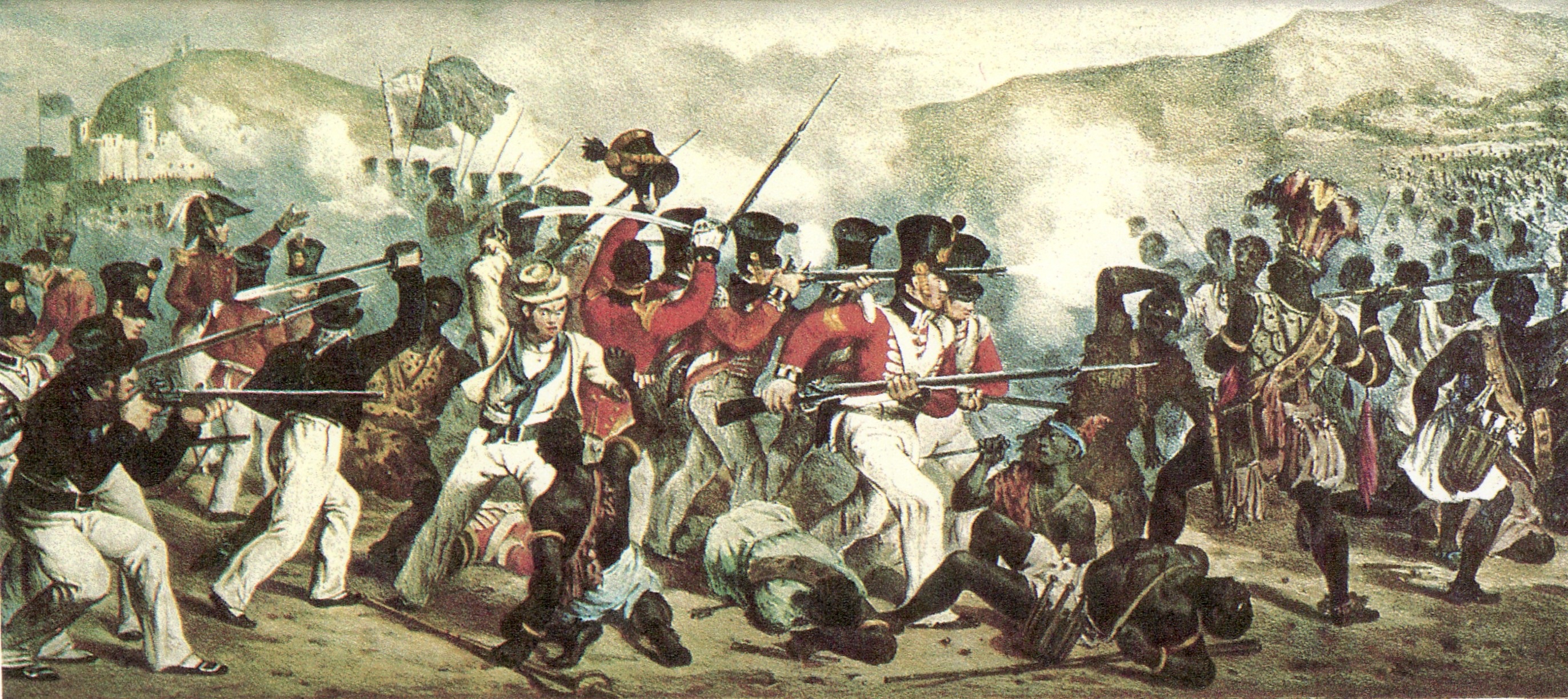
In 1976, British captured the coast of Sri Lanka. They tried to capture the Kingdom of Kandy in the highlands of the country to no avail for years with the locals fighting against them valiantly. Finally, in 1815 the Kingdom of Kandy fell into the hands of the British with the help of some locals who betrayed the King, ending the independence of the country.
By the mid-19th century, Sri Lanka was a staple in the British market due to tea, coffee, and rubber cultivations in the uplands of Sri Lanka. There were several rebellions by the locals against the British rule, which were bloodily suppressed. On a positive note, the British introduced democratic elements to Sri Lankan politics with the development of a constitution.
When did Sri Lanka get independence?
Sri Lankan Independence Movement was a peaceful political movement. It happened over a few decades since the beginning of the 19th century, which unified Sri Lankans together regardless of their ethnicities or religions. The movement was led by the educated middle class of Sri Lanka and eventually succeeded on 4th February 1948.
Who is the Sri Lankan President?
Maithripala Sirisena is the 7th and current President of Sri Lanka.
How was Sri Lanka affected by the 2004 tsunami?
On the day after Christmas in 2004, a huge tsunami struck Sri Lanka’s shores in the morning hours. Sri Lankans had hardly even heard the term “tsunami” let alone expecting one, except in their folklore when a similar occurrence happened around 200 BC.
The whole country came together as one to recover from the disaster, thousands of volunteers pouring into the affected areas to help clean up and relief efforts. Many countries including the USA, Canada, India, China, England and the UAE actively helped Sri Lanka to get back on her feet.
Sri Lanka recovered from the disaster within a surprisingly short period of time due to the collective efforts. You can visit the Tsunami Memorial and the Museum in Hikkaduwa. It remembers the lives lost in the Hikkaduwa train wreck due to the 2004 tsunami which was the largest single rail disaster in world history by death toll.
Religion in Sri Lanka
Sri Lanka is a predominantly Buddhist, multi-religion country. Theravada Buddhism has been the main religion in the country since the 2nd century BCE. Currently, over 70% of the population in the country identify as Buddhists. The remaining 30% consists of Hindus, Christians, and Muslims and Others.
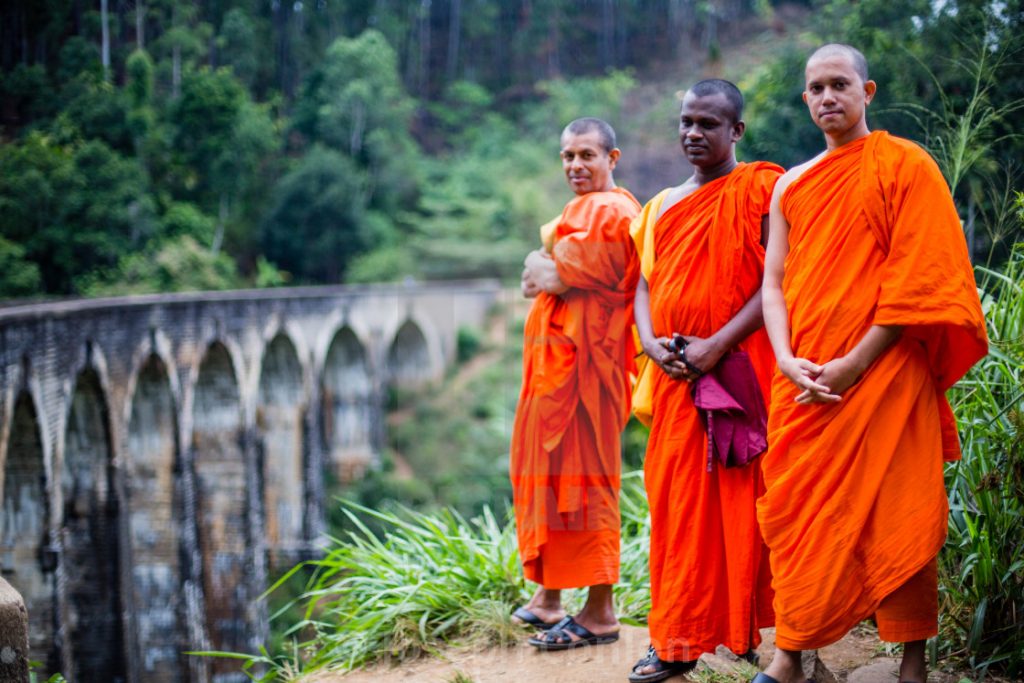
Ecology in Sri Lanka
If you love nature, greenery, and wildlife, this country has a lot to offer you! Sri Lankan lowland rain forests cover 2.41% of the land area of Sri Lanka. The year-round warm and wet climate is the reason for the thick forest canopy embracing numerous plants and animal species.
The country has one of the highest rates of biological endemism in the world, with 16% of the fauna and 23% of flowering plants are purely endemic to the country.
Besides, Sri Lanka is home to over 120 species of mammals including Elephants, Leopards, and Sloth Bears; adding Blue Whales and Sperm Whales to the list, they are called the Sri Lankan Big 5! It’s important to mention that although Sri Lanka does not have tigers, it features one of the highest densities of leopards in the world.
Moreover, there you can meet such amazingly cute animals as…giant squirrels!
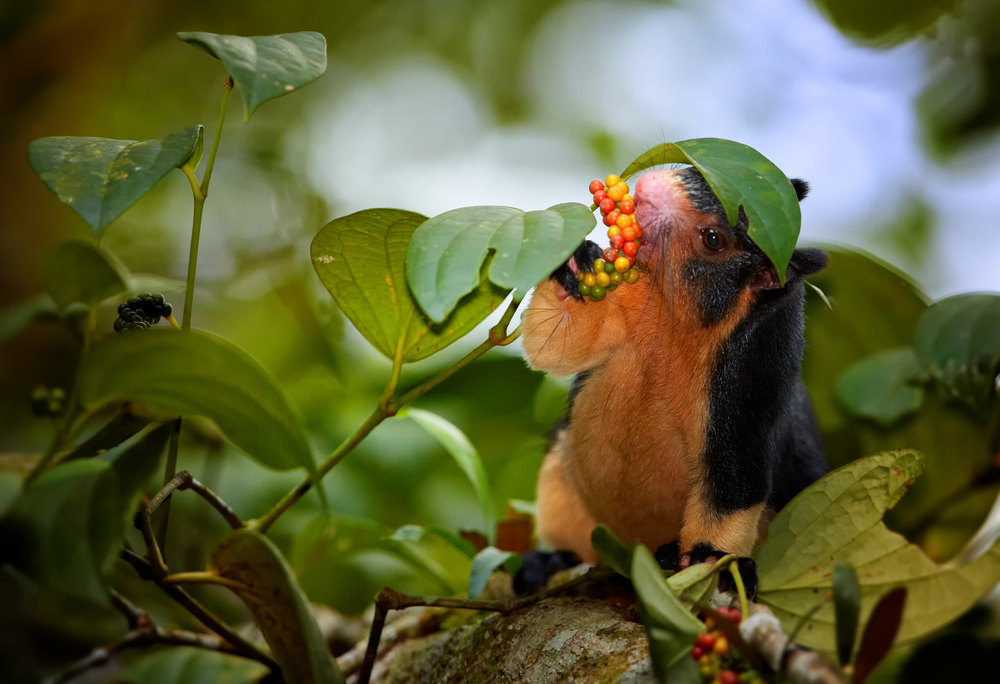
Despite the miniature size of the island, Sri Lanka has one of the richest diversity of amphibians in the world. There are reportedly over 100 endemic species. Sri Lankan government has strict rules in their National Parks countrywide. This is to protect the biodiversity of the island against the prying human hands like illegal hunters.
Sri Lanka can be divided into two major ecological zones
- The dry zone (less than 1900mm of rainfall annually): North, Southeast and East parts of Sri Lanka
- The wet zone (an average of 2500mm rainfall annually): Central and Western parts of Sri Lanka
The highest point of the country is Piduruthalagala (Mount Pedro) – 2524m. The central part of the country consists of many mountains. Rivers originate from the highlands that flow to the plains below all around the country, making their way to the sea. There are many waterfalls across the highlands as rivers make their way down the cliffs.
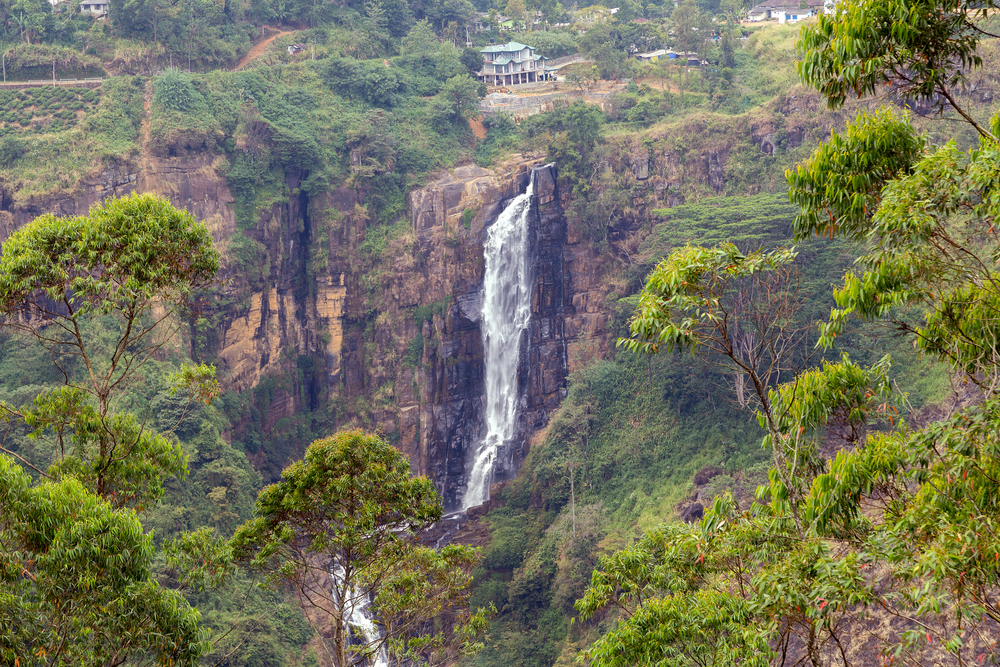
Sri Lanka has over 100 rivers spread across the country. The longest river of Sri Lanka, Mahaveli, feeds many rice fields and other agricultural projects. She makes her way northeastward across the central highlands and empties into the Bay of Bengal near the port of Trincomalee, on the eastern coast.
